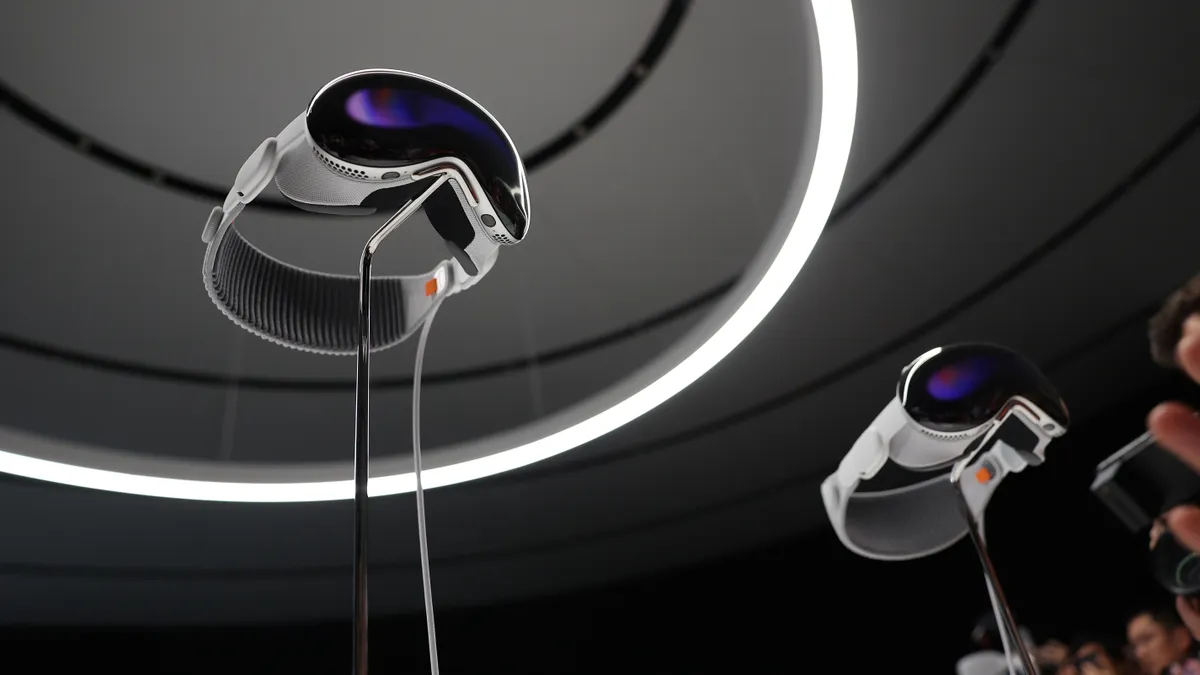Dive Brief:
- Osso VR has launched a medical training app for the Apple Vision Pro mixed-reality headset.
- The app simulates the operating room to help healthcare professionals and patients preparing for surgery learn about the key steps in two procedures, carpal tunnel release and total knee replacement. The company announced the release on Thursday.
- Osso VR’s launch follows Siemens Healthineers’ introduction of an Apple Vision Pro app that allows people to view interactive holograms of the human body through the headset.
Dive Insight:
Osso VR, which recently said it will lay off 67 people, has developed a virtual reality surgical platform for training and assessing physicians. The company has created software for Quest headsets from Meta, Facebook’s parent company, and taken advantage of technological advancements of that platform such as hand-tracking capabilities that eliminate the need for controllers.
The Apple headset also has hand-tracking capabilities, as well as features that set the device, which is more expensive than Meta’s products, apart from the competition. Justin Barad, co-founder and chief strategy officer at Osso VR, explained some of the benefits of the Apple technology in a statement.
“Apple Vision Pro unlocks new opportunities to scale spatial computing in healthcare with groundbreaking display quality and virtually lag-free learning experience, helping solve important challenges to education in healthcare,” said Barad, who stepped down as CEO in February.
Osso VR has not yet brought all of its content to the Apple device. The company provides more than 25 orthopedic training modules through Osso Academy, allowing people to practice procedures such as total shoulder replacement and anterior hip surgeries using virtual reality headsets. Meanwhile, Osso VR’s Apple app allows users to practice two procedures.
The company plans to cut 30 people with titles related to art and illustration, as part of the elimination of 67 positions at its headquarters in San Francisco. Osso VR CEO Greg Born said the changes were intended to “enhance our operational efficiency and better align our resources with the market’s demands.”












